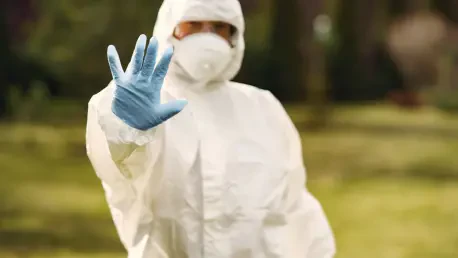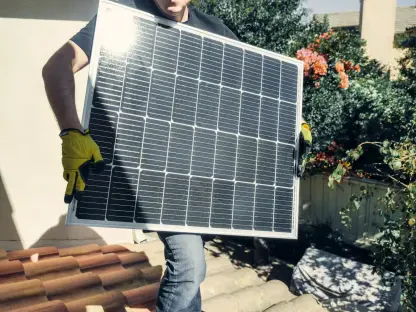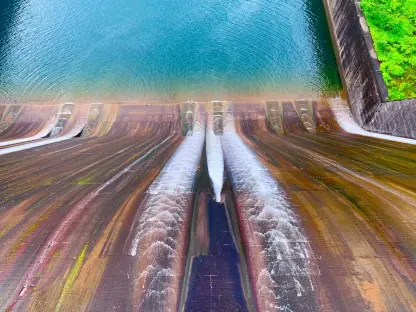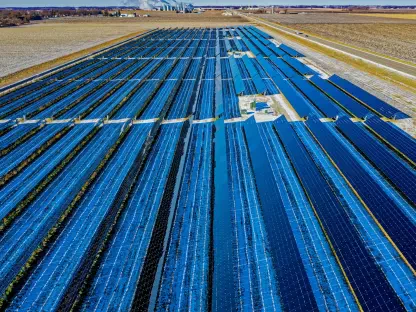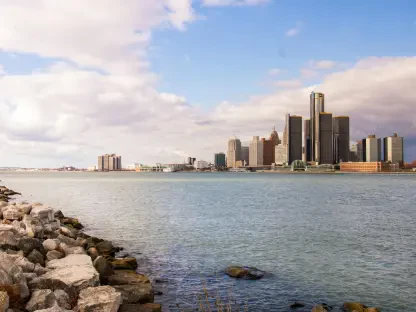What if the river flowing near your home, a lifeline for drinking water and cherished memories, hid a toxic secret just upstream? Near Londonderry, Northern Ireland, this chilling scenario unfolds at the Mobuoy dump, a sprawling illegal landfill uncovered over a decade ago. Spanning more than 100 acres, this site holds an estimated 1.6 million tonnes of waste, threatening the River Faughan and the community that depends on it. The scale of this environmental crime has ignited outrage among locals, who now demand urgent action for a clean-up that could cost over £100 million. This story explores the depth of the crisis, the voices of those affected, and the rocky path toward remediation.
Uncovering a Toxic Legacy Near Londonderry
Nestled in Campsie, just outside Londonderry, the Mobuoy dump emerged as a shocking discovery in 2013, branded as one of Europe’s largest illegal landfills. Once a quarry, the site became a dumping ground for staggering amounts of waste, including domestic trash and construction debris, buried without regard for environmental or public safety. The sheer size—comparable to 70 football fields—stuns even seasoned experts, while its proximity to a vital water source amplifies the stakes for thousands of residents.
The environmental crime behind this disaster was orchestrated by businessmen who profited millions while risking the region’s ecological balance. Their actions, deemed industrial-scale wrongdoing by legal authorities, left behind a scar on the landscape that continues to haunt the area. For many living nearby, the revelation of this hidden catastrophe shattered any sense of security, raising urgent questions about how such a violation went undetected for so long.
Why Mobuoy Matters to Every Resident
The significance of the Mobuoy crisis extends far beyond its physical boundaries. Positioned near the River Faughan, a key drinking water source for Derry, the dump poses a latent threat to public health through polluted groundwater that could seep into the river system. While surface water tests currently show no contamination, the potential for long-term damage keeps the community on edge, fearing for both their well-being and the wildlife that depends on the river.
Economically, the landfill casts a shadow over property values and stifles future development in the surrounding area. Families hoping to build homes or invest in the region face uncertainty, as the stigma of living near a toxic site lingers. Socially, the issue has unified residents in their frustration, creating a collective demand for accountability and swift resolution to restore trust in the land they call home.
Voices of Fear and Frustration from the Community
At a packed public meeting in Eglinton Community Centre, hosted by the Northern Ireland Environment Agency (NIEA), the raw emotion of those affected poured out. Kerry Buchanan, a local with deep ties to the River Faughan, spoke of childhood memories tainted by fears of pollution, asking pointedly how authorities could guarantee the river’s safety. Her words echoed a shared anxiety among attendees, many of whom rely on the river not just for water but for a sense of heritage.
Robert Ross, planning to build a home only a mile from the site, voiced a different concern, questioning whether the clean-up timeline would align with his family’s future. His uncertainty reflects a broader unease about delays and the lack of clear answers. Meanwhile, civil engineer Robert Thompson raised alarms about flooding risks, noting that climate change could push water into the dump, potentially spreading contaminants further, even if hazardous materials currently sit outside flood zones.
These personal accounts, each distinct in perspective, paint a vivid picture of a community grappling with an invisible threat. Skepticism toward past institutional failures runs deep, with many residents expressing doubt about whether promises made today will translate into tangible action tomorrow. Their stories are a powerful reminder of the human cost behind environmental negligence.
Scrutinizing Official Plans and Expert Warnings
The Department of Agriculture, Environment and Rural Affairs (Daera), alongside NIEA, has put forward a remediation strategy, yet public trust remains shaky. Environmental advocate Dean Blackwood of River Faughan Anglers criticized Daera’s earlier inaction, though he acknowledged the value of current public consultations. His stance captures a cautious hope that dialogue might finally lead to meaningful progress, even as past oversights cast a long shadow.
Experts at the meeting provided some reassurance, confirming that the River Faughan’s surface water remains uncontaminated for now. However, they warned of polluted groundwater beneath the dump as a persistent danger, requiring protective barriers and constant monitoring to prevent leakage. Political figures like SDLP assembly member Mark H Durkan have defended Daera’s efforts, pointing to rigorous water quality testing as evidence of commitment, though not all residents are convinced by these assurances.
This mix of official responses and expert insights reveals a tangled web of accountability. While steps are being taken, the community seeks more than promises—they demand concrete timelines and proof that their concerns are being prioritized over bureaucratic delays. The gap between official rhetoric and public expectation remains a critical hurdle.
Charting the Tough Road to Recovery
Remediating Mobuoy is a daunting task, with costs pegged at £107 million and logistical challenges that defy easy solutions. Daera’s plan focuses on removing hazardous waste while leaving inert materials like concrete and bricks in place, covered by soil and vegetation to trap pollutants. Barriers aim to stop leaching into the River Faughan, and ongoing water quality checks are deemed essential to catch any emerging threats.
Community involvement is seen as vital to shaping this process, with public consultations open until October 2 offering a chance for input. Upcoming events in Derry provide further opportunities for residents to engage directly with officials and push for transparency on funding and timelines. These platforms empower locals to hold authorities accountable, ensuring the clean-up doesn’t stall for another decade due to indecision or budget constraints.
Beyond technical fixes, the path forward requires rebuilding trust through consistent updates and visible progress. The strategy must balance environmental safety with financial realities, a tightrope walk that will test the resolve of both officials and the community. Every step taken now could determine whether Mobuoy remains a cautionary tale or becomes a model of recovery.
Reflecting on a Battle for Environmental Justice
Looking back, the struggle over the Mobuoy dump stood as a stark testament to the devastating impact of environmental crime on a tight-knit community. Residents near Londonderry faced years of uncertainty, their fears fueled by the looming threat of contamination in a river that once symbolized purity and life. Their voices, raised in meetings and consultations, echoed a collective resolve to reclaim their environment from the shadow of industrial-scale negligence.
Moving ahead, actionable steps offered hope for resolution. Continued pressure on Daera and NIEA to adhere to timelines, alongside active participation in public forums, emerged as critical ways for the community to drive progress. Securing additional funding and exploring innovative containment technologies also surfaced as potential game-changers to expedite the clean-up. Ultimately, the saga of Mobuoy underscored a broader lesson: safeguarding natural resources demanded vigilance, collaboration, and an unwavering commitment to justice from all stakeholders.
